Page 2 of 2
glass problem
Posted: Sun Dec 16, 2012 8:26 pm
by manos
Ok, but by deleting the inside plane, you could see if that's better.
Then you can see if the outside plane faces out and the inside plane faces the inner of the glass, if you know what I mean.
Re: glass problem
Posted: Sun Dec 16, 2012 9:09 pm
by bepeg4d
have you tried with pmc and caustic blur set at 0.02 ?
ciao beppe
Re: glass problem
Posted: Mon Dec 17, 2012 12:32 pm
by friscokid
I made some further simple tests and there is something going totally wrong with specular matertials.
The images below show some tests with a plane and a cube that have a basic specular material applied (IOR 1.47).
The szene is rendered in the following combinations:
1. only one blackbody emitter, no environment.
2. daylight environment, no emitter.
3. texture environment, no emitter.
As you can see, in all of the images there is some kind of absorption. The light does not pass correctly through the glass or the glass is casting shadows that shouldn't be there.
I tried PT and PMC with a maxdepth of 16 or greater. Several values for caustics blur from zero to one.
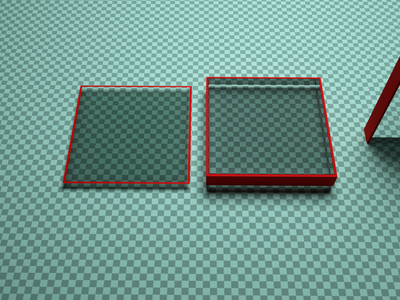
- emitter only
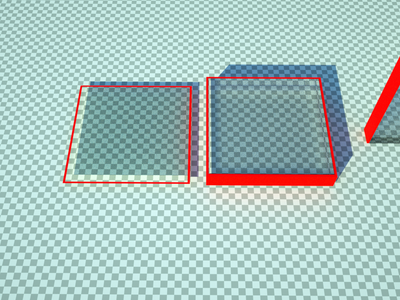
- daylight only
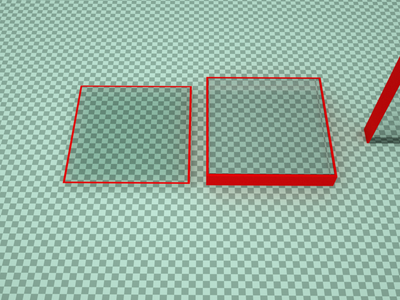
- environment only
Another problem is the missing color of the inside of the frame. When you compare image 1 with the image below, where the glass is set to opacity zero, you can see, that the inside of the frame should be red.
In the first image, which is exactly the same despite the opacity of the glass is set to one, the inside of the frame is rendere as if it wouldn't exist.
The frame and the glass object do not overlapp and the normals and uv maps are set correctly.
The render kernel and the values for maxdepth do not make any difference.
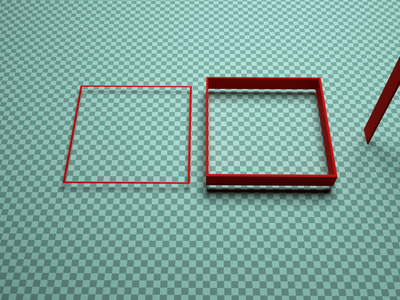
- emitter only, glass opacity zero
Could someone of the octane render team take a look at this, please.
Right now, it seems to be impossible to render glass material correctly.
The test szene is attached.
Re: glass problem
Posted: Mon Dec 17, 2012 1:15 pm
by Elvissuperstar007
caustic_blur 0.0030
Re: glass problem
Posted: Mon Dec 17, 2012 1:30 pm
by friscokid
caustic_blur 0.0030, pathtracing, maxdepth 16:
same problem.
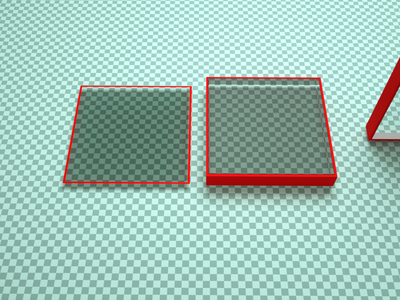
- emitter only caustic_blur 0.0030
Re: glass problem
Posted: Mon Dec 17, 2012 10:04 pm
by friscokid
Isn't there anybody experiencing the same problem?
This behaviour is obviously physically incorrect. If there isn't a hidden setting or trick I'm not aware of, then glass material is not usable.
Could someone of the octane developers please check the attached test scene to verify if this is a real problem with the engine or if it is just a setting that has to be adjusted.
I'm stuck and can't go on working if this can't be solved.
Any help appreciated.
Re: glass problem
Posted: Mon Dec 17, 2012 10:20 pm
by FooZe
Hi friscokid,
I think your main problem here will be the opacity of the emitter. At the moment making the emitter invisible will cut all indirect light (this, along with adding visibility flags and whether the direct light from the emitter should also be effected by the opacity of the emitter is something that needs to be thought through in the future).
If you increase the opacity of the emitter then this should work, also don't forget to increase the transmission to 1.0 for a completely transmissive material, and glass always has some reflection (but i'm sure you were probably just doing this to test transmission?). You shouldn't need any caustic blur.
The problem with not seeing the sides is that that the face on the inside is reflecting the floor. If you were to remove the faces around the wall so that there are just a top and bottom plane that may be more what you are after (just scale them so there is no gap around the edges).
Thanks
Chris.
Re: glass problem
Posted: Mon Dec 17, 2012 10:25 pm
by FooZe
Also, as another note, with the daylight system then these will always cast shadows (this is a limitation of octane). If you do this, only caustics will "get through" so adding caustic blur helps but it's not going to do what you want with the watch.
Thanks
Chris.